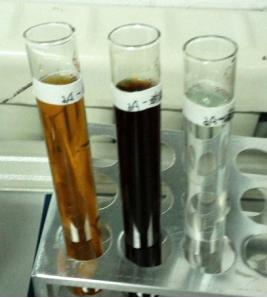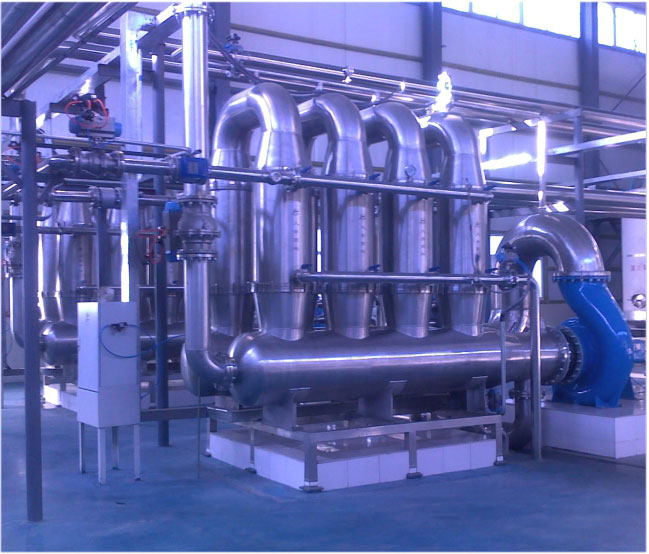Antibiotics, also known as antibiotics, are chemical substances produced or synthesized by microorganisms (including bacteria, fungi, etc.) or higher animals and plants in the life process, which can inhibit or kill some pathogens.
Antibiotics can generally be divided into 5 categories: β-lactam antibiotics (such as penicillin), aminoglycoside antibiotics (such as streptomycin), macrolide antibiotics (such as erythromycin, spiramycin), tetracycline Ester antibiotics (such as tetracycline) and peptide antibiotics (such as vancomycin).The birth and development of antibiotics have played a very important role in promoting human health. The most obvious performance is that it has increased the life span of human beings.Before the advent of antibiotics, humans were at a loss for many bacterial infections. Once they were aware of such diseases, they could only wait for death.
From the emergence of antibiotics to now only 60 years, many infectious diseases will not appear on a large scale, and the average life expectancy of human has increased by at least 10 years. The positive role of antibiotics is also reflected in the diagnosis and treatment of some new sudden infectious diseases.
Without antibiotics, the atypical pneumonia, H1N1 influenza and other diseases that have emerged in recent years will make people pay an unimaginable large-scale death.The production process of antibiotics can be roughly divided into four processes: fermentation, filtration, concentration and crystallization.Traditional filtration methods mainly include: adsorption method, solvent extraction method, ion exchange method and precipitation method.Although these methods have their own characteristics, they often have complicated processes, high labor costs, long time-consuming, high energy consumption, and serious pollution.
In order to improve product quality, reduce costs, increase yield, and shorten processing time, the existing post-treatment processes and methods need to be further studied and improved.
In addition, with the rapid development of biotechnology, new products continue to emerge, and various substances with complex structures that were not available in the past have been obtained. The purity requirements of new products have been correspondingly increased, which puts forward new requirements for the post-processing process.
As a new type of separation technology, membrane technology has been applied in the post-treatment process of a variety of fermentation products because of its no phase change, no secondary pollution, convenient operation, compact structure, low maintenance cost, easy automation, fast and efficient.Compared with other filtration processes, the use of membrane treatment technology not only removes more impurities, but also simplifies the production process, avoids the consumption and residue of organic solvents, reduces investment costs and operating costs, improves product yield, and realizes Green, Environmentally friendly and Energy-saving manufacturing of antibiotics.
The production process of conventional antibiotics is shown in Figure 1. Membrane technology can be mainly used for clarification of antibiotic fermentation broth, desalination, decoloration and concentration of products, as well as discharge or reuse of production wastewater.At present, JIUWU HI-TECH has promoted the application of membrane technology in cephalosporin, colistin sulfate, Streptomyces sulfate, erythromycin, vancomycin, aureomycin, clavulanic acid, amphotericin, lincomycin, spectinomycin, bleomycin, doramectin and other antibiotics.
Fig 1. Process flow chart of conventional antibiotics
CASE 1 Clarification of Lincomycin by Ceramic Membrane technology
Lincomycin is an alkaline antibiotic against Gram-positive bacteria.
At present, the traditional industrial extraction process is generally: after the fermentation broth is pretreated, the product is obtained by solvent extraction, which causes problem such as environmental pollution and low yield due to high consumption of organic solvent and low extraction partition coefficient.
A green and efficient lincomycin production process can be formed by replacing the traditional extraction process with ceramic membrane filtration and resin adsorption.
Compared with the traditional extraction method, ceramic membrane process has the advantages of simple operation, fully automation, greatly reducing the labor cost and production cost by 23%; ceramic membrane process can also effectively remove the protein and large amounts of impurities in lincomycin fermentation broth, and the purity is increased by about 20%, total yield of lincomycin is more than 97%. In addition, the discharge of high concentration wastewater is reduced by 50%, meeting the requirements of clean production.
CASE 2 Concentration of antibiotics by Nanofiltration membrane technology
Most antibiotics are still heat sensitive. The enrichment of products by evaporation of solvent through thermal phase transformation will lead to great loss and high cost. The cost of enriching products by freezing will be higher, which will directly affect the cost of separation and purification of antibiotics. Target products are trapped by the size of pore size of nanofiltration membrane, water and other small molecules are concentrated .As a simple physical process, it has the characteristics of simple process, low energy consumption, low product loss rate, and high level of automation.On the one hand, the potency of antibiotics is improved, and on the other hand, the effluent of nanofiltration is relatively clean, which can be reused in other links of the separation and purification process to achieve efficient enrichment of products and efficient use of solvents.
Fig 2. Resin desorbed solution, NF concentration and NF permeate from left to right
JIUWU HI-TECH adopted nanofiltration technology to increase the antibiotic potency to more than 20,000 U for a 500m3/h antibiotic resin desorbed solution in Xinjiang.The permeate potency of nanofiltration technology was close to 0 and the conductivity was low, which could be reused by ceramic membrane or organic membrane process. Compared with the traditional process, the yield of antibiotics in the enrichment antibiotics step was increased by 4 % .In addition, the cost is also reduced by 5-10 times (different prices of steam lead to different operating costs), the dual goals of energy saving and efficient extraction of products are truly achieved.
Fig 3. The photo of filed equipment







 +86-25-58849045
+86-25-58849045
 +86-25-58749295
+86-25-58749295
 jiuwu@jiuwu.com
jiuwu@jiuwu.com
 No. 9 Park Road, Pukou District, Nanjing City (Sanqiao Factory)
No. 9 Park Road, Pukou District, Nanjing City (Sanqiao Factory) Call us on:
Call us on:  Email Us:
Email Us:  No. 9 Park Road, Pukou District, Nanjing City (Sanqiao Factory)
No. 9 Park Road, Pukou District, Nanjing City (Sanqiao Factory)

 English
English 한국어
한국어 français
français русский
русский Español
Español

